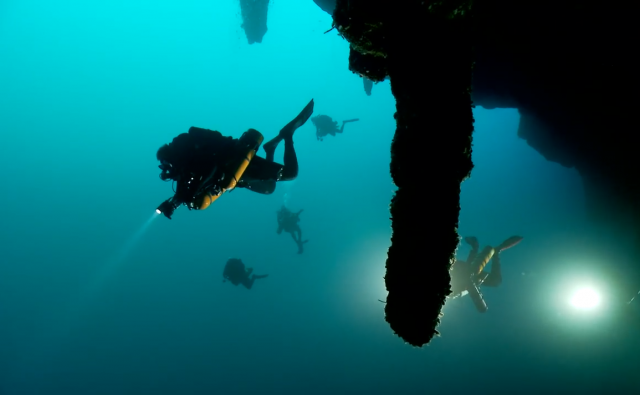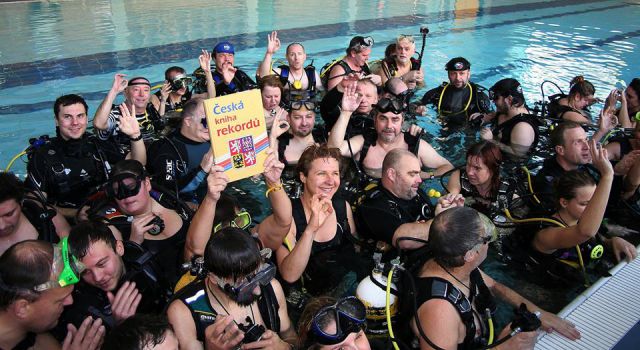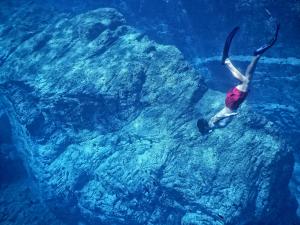Santa Rosa Blue Hole - Geologic Anomaly in the High Desert of New Mexico
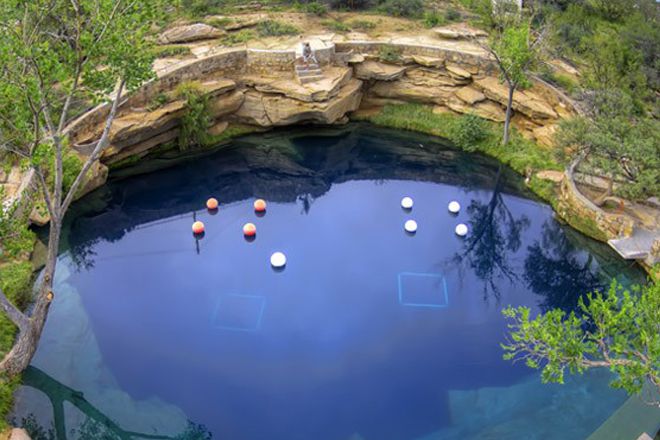
The Blue Hole is an artesian well that was used as a fish hatchery in 1960s but came later under the control of the city of Santa Rosa and has since been converted into the Southwest's most popular dive training site. A diving permit is required to dive the Blue Hole and can be obtained from the city of Santa Rosa ($8 for a one-week permit and $5 for parking and recreational swimming).
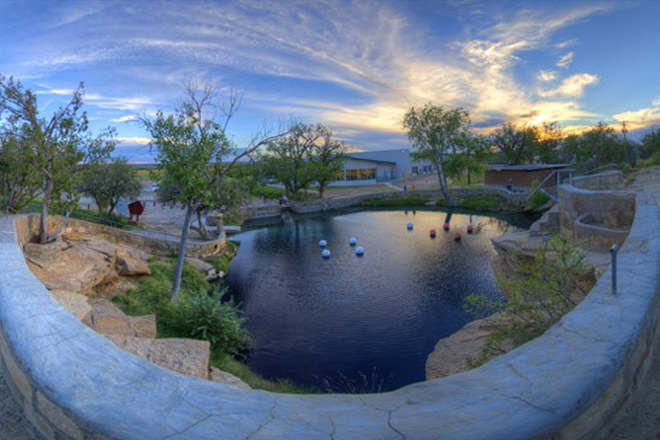
From geological point of view, the Blue Hole is a phenomenon. It was formed by estimates anywhere from 20,000 to 100,000 to 300,000 years ago by water erosion action in both subterranean and rain, watershed flows and surface water. The sinkhole is fed by an underground water supply that is no doubt connected through water-filled caverns underneath and pumps out some 3,000 gallons (11,000 liters) of water per minute, making the water completely renews itself every six hours!
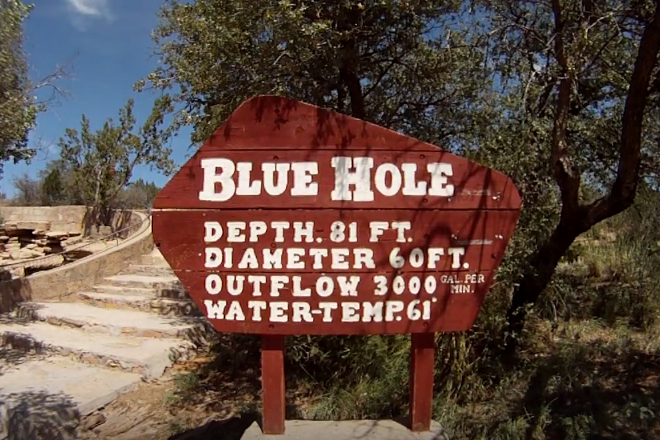
At the bottom, about 80 feet (24 meters) down, there’s a metal grate to keeps divers from going any farther into the maze of caves that sits below it - in 1976, two students died while exploring "the unknown". However in 2013, the grate opened to a special team of divers from the ADM Exploration Foundation to explore what lies beyond. Still, Santa Rosa Blue Hole decided not to give up her secrets and the expedition had little success getting past tons of rock choking the entrance to the second room of the cave. Although the removal of the rocks was not able to open physical human access to the cave below 91 feet of depth, it was enough the increase the fresh water discharge from the spring and substantially improve water clarity.
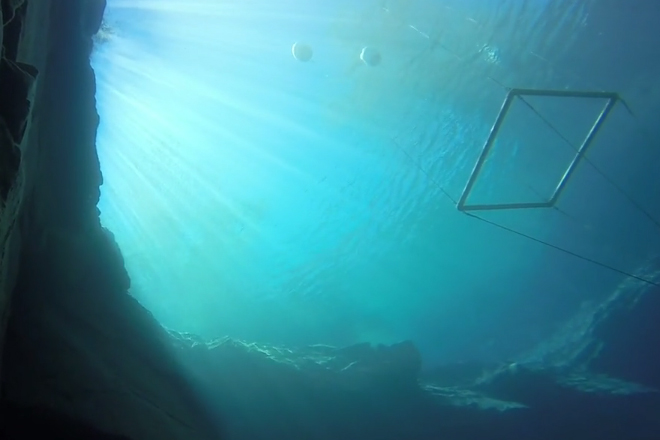
Today, you can dive the Blue Hole year-round and among popular times to dive here are nighttime, when you can lie on the bottom and gaze up at the moon and stars, and wintertime (busiest season), when snowflakes fall silently onto the surface before melting away. Other than that the sinkhole is nothing spectacular - the walls are made of limestone and the bottom is fairly flat with little plant life and occasional goldfish appearances. But hey, the coral reef is not what you come here for, is it?
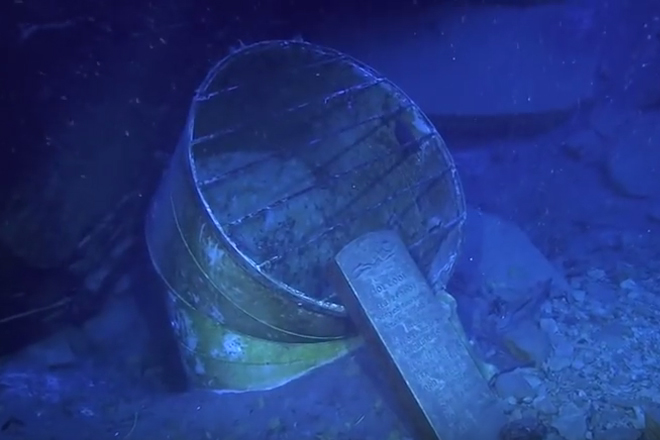
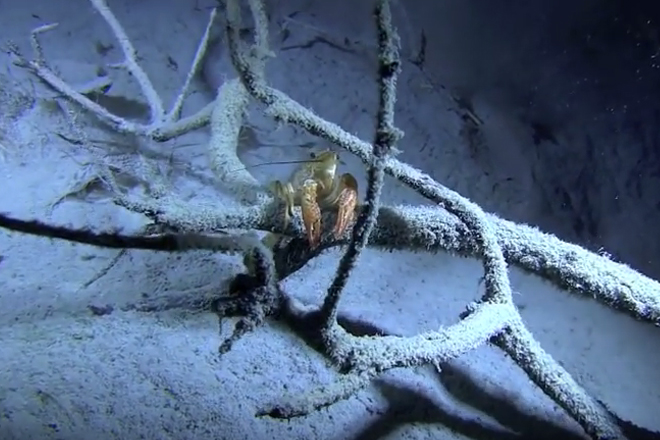
Rather than that, divers from around the region flock to Blue Hole for fun and certification. Upon entry, you can either make a free descent or follow a buoy line down to one of two square, floating platforms. The floating platforms permit instructors to bring their Open Water course students to the Blue Hole to conduct skills for their training dives, but the dive site is also perfect for advanced instruction. Its depth, accessibility for night dives and its altitude of 4,600 feet (1,393 m) above sea level make it ideal for Advanced Open Water or specialty training courses, such as an Altitude Diver.
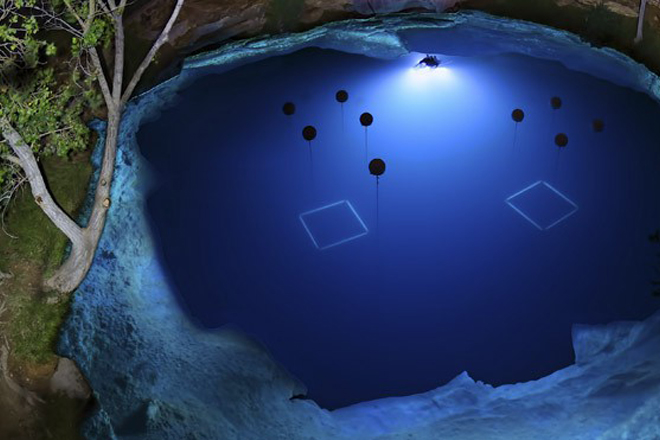
Due to the higher attitude, the risk of decompression illness is increased (you can hit altitude in the 7,000- to 8,000-foot range) if you're driving out of town right after your dive so make sure to adjust dive plans and tables accordingly. There is a dive center is located next to the Blue Hole, and is open on Saturdays and Sundays from 8 a.m. until the last diver is served. The shop rents gear, tanks and offers air fills, but does not provide instruction. For More Info: Contact the Santa Rosa Visitor Center at (575) 472-3763.
Photos: © SRBH
Source: http://www.santarosabluehole.com






